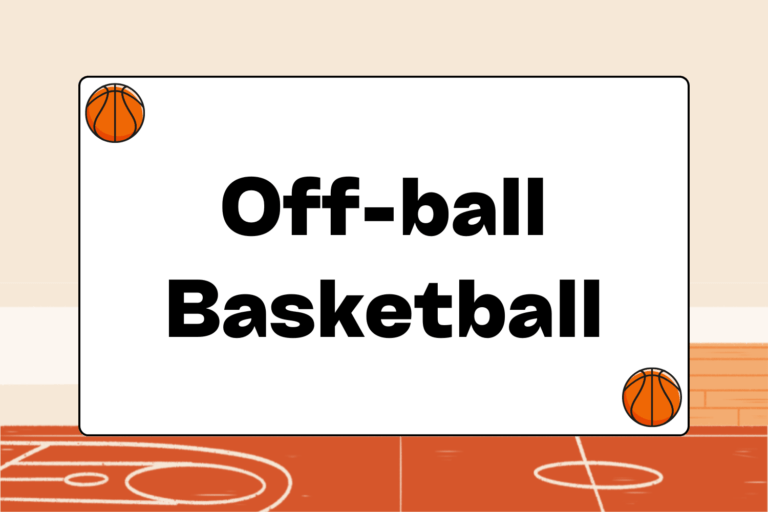Mismatches on offense often happen naturally during the course of a game. Maybe a defender switches on defense, a player gets lost following a quick cut, or a defensive player is recovering to get back on defense.
But efficient offenses find ways to create mismatches instead of waiting for them to happen naturally. There are many advantages to creating mismatches, and they all relate to taking advantage of a weaker opponent to generate easy offense.
Creating Mismatches is a Mindset
As basketball has evolved, taking advantage of individual talent and quickness has become more important than creating offensive mismatches. Most competitive amateur teams rarely work to create mismatches for the following reasons:
- Basketball is more of a one-on-one game now than ever before.
- Youth level coaches prefer not to pick on an individual defender.
- More coaches play zone defense, which is more difficult to expose to a mismatch.
- Teams have less practice time to run plays that emphasize isolation with a weaker defender.
However, running individual plays that lead to mismatches is still an effective way to create scoring opportunities. At its heart, creating mismatches is about having a team-oriented mindset and the patience to wait for a mismatch to develop. For this reason, it’s more of an offensive concept than an individual play.
Player Responsibilities
The player with the mismatch must be prepared when he receives a pass. More specifically, he must be able to:
- Dribble-penetrate around a slow on-ball defender.
- Rise up for a jumper over a defender who takes a step back.
- Look to pass to a cutting teammate over a smaller defender.
In creating a mismatch, it’s important that each player on the floor must be able to recognize when they’re being guarded by a player who’s smaller physically or weaker defensively, and use that mismatch to create a basket. It also means that ball-handling teammates must recognize a mismatch and fire a quick, crisp pass.
Mental Edge
For tips on creating mismatches, watch the plays run by professional players in a half-court offense. Professional basketball is mostly about creating mismatches, since most of the defensive players are so quick defensively.
The Best Mismatches
The best mismatch a player can find himself in is 1-on-0, and it happens more often than you might think. Creating an open lane to the basket can happen on an inbound play, off of a screen from a teammate, following a sharp cut, or in transition. No matter how it happens, ball-handlers must recognize it quickly and fire a crisp pass to the open teammate for a quick score.
The second best mismatch — isolation with a weaker or smaller defender — should also be recognized quickly. Set plays are a great way to create mismatches that lead to baskets.
Screen to Create a Defensive Switch
Screens to create switches are a helpful offensive technique and the primary ingredient in the motion offense. Screens force the screener’s defender to choose between staying with his man and switching to guard the ball-handler. They’re a great way to force a post defender to step out and guard a smaller, quicker perimeter player, provided that:
- The screen is firmly set by the post player.
- The ball-handler rubs off his man with a quick cut around the screener.
- The screener and ball-handler separate quickly after the screen.
Screens are frequently used to free players without the ball. Post players and perimeter players should set and benefit from screens in the course of the half-court offense to create mismatches and get open.
Give-and-go
In a quick give-and-go, a ball-handler passes to a teammate and then makes a quick cut to the basket or to an open spot on the floor. The cut should be sharp and follow a slow-and-go technique. It works best when the passer’s defender watches to see where the ball goes, or loses sight of his man for an instant.
When run properly, the give-and-go can spring the passer into an open passing lane to receive a return pass. He’ll usually be open for an uncontested lay-up or get matched up with a help defender. In either case, he must react quickly and attack the basket with a lay-up or jump shot.
Transition Offense
Creating mismatches in transition can only happen when a team races upcourt after a rebound or steal, forcing the defensive team to quickly recover. When the defense is forced to scramble back, it must pick up the ball first, then the man nearest to each defender. This often creates unwanted match-ups, such as a point guard having to check a big man in the paint.
A team must have the right mindset to create transition offense. The defensive rebound must be collected, and the rebounder must quickly turn and fire a crisp outlet pass. Players must fill the lanes to the basket, and find open areas of the floor if a quick transition score isn’t available.
Take Advantage
Creating a mismatch can lead to easy baskets , though it’s important to keep in mind that the easy basket opportunity can only come when:
- A teammate with the ball recognizes the mismatch.
- The player with the mismatch receives the ball in triple-threat position.
- The player uses his advantage to get a quick scoring opportunity.
Mismatches are an especially helpful tool for teams struggling to create individual offense. It’s also good when facing a team that has great individual defenders, or a defense that is overmatched or undersized.





